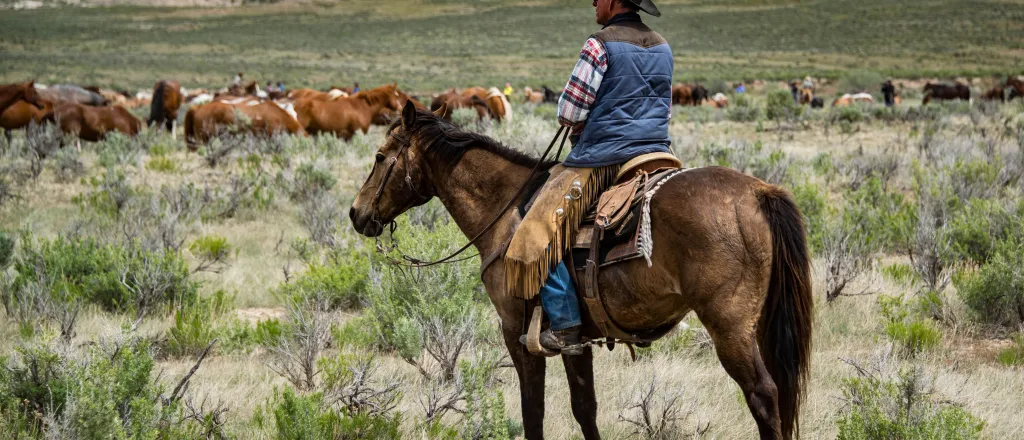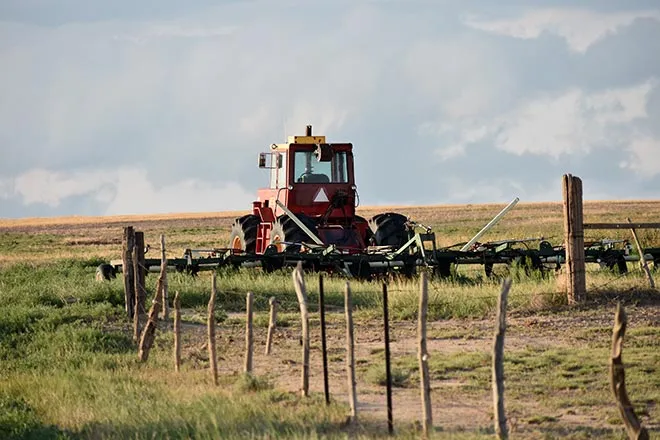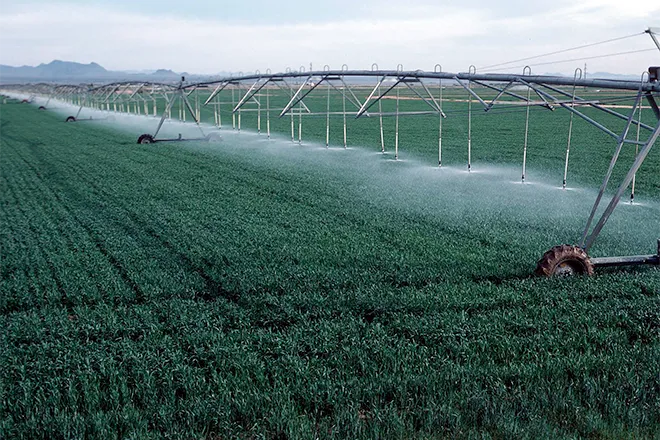
Collaboration grows 'regenerative ranching' program in Northwest
(Oregon News Service) Jack Southworth’s ranch sits at 4,600 feet in elevation outside Seneca, Oregon, near the Strawberry and Blue mountain ranges. Like many ranchers, his cattle graze private, deeded land in the winter and leased National Forest land in the summer, including a high mountain plateau filled with bluebunch wheatgrass and Idaho fescue and surrounded by Ponderosa Pine forest. Since the valley is “good at collecting cold air,” as Southworth put it, it has a short growing season, and if cattle stay too long in any given place, they will eat the grass down to bare ground, creating conditions for soil erosion.
Last year, in an effort to improve his pasture and make his land more resilient to these challenges, Southworth, a founding member of the cooperative Country Natural Beef (CNB), enrolled in the pilot program of the company’s new initiative, called Grazewell. In partnership with Sustainable Northwest and Northway Ranch Services, Grazewell aims to provide ranchers with monitoring and education that help them adopt regenerative ranching practices. In February, the project received $500,000 from a charitable trust.
Then, in September, Grazewell and several research partners received a $10 million grant through the U.S. Department of Agriculture’s (USDA) Climate Smart Commodities program to build what a press release called “the West’s largest climate-smart ranching program.” In the coming years, CNB plans to enroll all of its member ranches—which span 6.5 million acres across the Western U.S.—in the program.
Regenerative grazing has increasingly become a buzzword as the market for local, sustainable foods has expanded and product labels such as Regenerative Organic have entered the market. But debates about ranching and climate are some of the food and agriculture world’s most contentious, among scientists and the general public alike. Beef is well-known for its sizable carbon footprint, and around 40 percent of the world’s methane emissions come from livestock.
But some ranchers and scientists see grazing as a way to make grasslands into effective carbon sinks. And the rise of carbon markets—including on conservation lands, or agricultural landscapes with conservation value—has focused recent attention, including from the USDA, on rangelands as sites for regenerative land management centered on climate goals.
For scientists, activists, and consumers, the ongoing conversation about regenerative ranching has largely focused how to quantify grazing lands ability to draw carbon from the atmosphere and sequester it in the soil. And CNB, which sells its meat at Whole Foods and other retailer across the West, is already marketing its Grazewell products as “climate-smart beef backed by science.”
For many ranchers, however, the value in adopting regenerative practices is about learning to work with ecosystems.
‘Our Roots and History Have Always Been Around an Environmental Idea’
Conventional beef production separates a cow’s life cycle into three stages. First, calves are born on a cow-calf ranch. Then, when they are a few months old, those calves, now called “yearlings” or “stockers,” are separated from their mothers and either moved to a separate set of pastures or sold to another ranch. Finally, when they are around a year old, they are sent to a feedlot, where they are slaughtered at 18-20 months old. On “grass-fed” or “grass-finished” beef operations, cattle spend all their days on grass and get slaughtered slightly later, at 20-24 months—but these operations produce just 4 percent of U.S. beef.
While CNB follows a conventional production cycle, with cows ending their lives in feedlots, the company is unique in the beef business because of its cooperative structure. The company is member-owned, and its 100 members have an equal vote regardless of “whether they have 80 or 800 cattle,” said Southworth. The model stands out as unique in an industry dominated by a small handful of large meatpacking companies including Cargill and JBS, and it is designed to give its member ranchers a better price for their beef, as well as participation in a “values-based” company.
That member-owned structure also means that CNB does not have the economies of scale of larger meat-packing companies. That means that the company has always focused on “leading with the attributes,” says rancher and communications manager Dan Probert.
Land management practices, along with animal welfare standards, are at the center of this approach. CNB’s 13 founding members met in 1986 at a training for holistic management, a form of managed grazing founded by Zambian game officer Allan Savory.
That background laid the groundwork for CNB’s current turn to regenerative practices. In holistic management, ranchers subdivide large pastures for higher-intensity, short-duration grazing. The management practices both increase pastures’ rest times and concentrate livestock foot traffic in a way that is meant to simulate the trampling of wild ungulates. Holistic grazing also emphasizes using pastures at the right time of year relative to grass growth, leaving plant biomass behind rather than grazing down to short stubble, and “adaptivity” to the land’s needs. Beyond land management, holistic management also trains ranchers in decision-making frameworks and long-term goal setting for their businesses and families.
In recent years, as farmers and ranchers have begun to use the term “regenerative,” CNB has been focusing more on principles such as keeping soil covered, fostering the soil’s living organisms, and increasing diversity of plants, especially native perennials. Minimizing bare ground is a key goal because of the link between deep-rooted perennials and holding more water and organic carbon in the soil.
Many credit North Dakota farmer Gabe Brown with popularizing the term regenerative and CNB started orienting its land health standards around the term after Brown spoke at the cooperative’s annual member meeting. But where row crop farmers like Brown often see economic benefit from cutting down on fertilizers, pesticides, and other inputs, ranchers must find ways to make more labor-intensive regenerative management pencil out—and the Grazewell initiative aims to support that effort for these Western ranchers.
Untangling Holistic and Regenerative Management
While holistic and regenerative practices are similar, regenerative tends to focus more on scientific indicators. Though many ranchers attest to remarkable outcomes from holistic practices, rangeland scientists have expressed skepticism regarding its claims to improve ecosystem health.
“The scientific community and the mainstream environmental community are skeptical [of holistic management’s ecological impact] because it’s really hard to measure,” said Hannah Gosnell, a social scientist at Oregon State University who studies ranchers’ adoption of holistic and regenerative practices.
Regenerative management’s focus on indicators, then, helps bridge ranchers’ commitment to holistic thinking and practices with the scientific community’s focus on hard data. In the Grazewell program, for instance, the key land health indicators are the percentage of bare ground, water infiltration, soil organic matter, soil organic carbon, and plant biodiversity.
But holistic management also plays a role in achieving those indicators. Gosnell emphasizes that the ecological systems thinking taught by practitioners of holistic management are key to successfully implementing regenerative agriculture. Her research argues that the key to regenerative agriculture is the shift to what she calls “integrative and systems thinking.” To be successful at regenerative agriculture, she said, “you need to understand the ecosystem processes and work with them as opposed to trying to control them.”
As Southworth put it: “Let’s use holistic management for goal setting in quality of life, landscape, production, and let’s not argue about whether holistic management itself is scientifically valid. Instead, let’s use uniform, scientifically-supported monitoring and figure out if our rangelands are getting more diversified with healthier soils.”
But Gosnell underscores that this shift is no small thing. “It’s hard. You have to learn a whole new way of thinking about your land and your animals and how they all work together.”
That’s where Grazewell comes in. CNB’s program is designed to meet ranchers where they are in the process of adopting this ecologically minded systems thinking and help them use scientific indicators to improve the rangelands they manage. “For some, it’s starting with plant identification and understanding foundational soil health principles, for others, it’s deeper,” said Marissa Taylor of Northway Ranch Services.
The Grazewell Initiative started in late 2020, when CNB approached Northway Ranch Services to research what existing regenerative ranch programs existed, and whether CNB’s work would fit into any of them. Some, such as Cargill’s RegenConnect, were focused on crop agriculture, while others, such as Audubon’s Conservation Ranching Initiative, were only open to grass-finished beef.
CNB wanted to create a program that would help manage their grazing lands within their conventional production cycle. Some of these regenerative agriculture programs are connected to the carbon credit marketplace; Grazewell has not partnered with a carbon broker, though they do plan to support ranchers who want to pursue carbon credits, said Dallas Hall Defrees of Sustainable Northwest.
As they began developing the program, they had to decide on what definition of “regenerative” they wanted to use. Whereas holistic management principles are laid out in Savory’s 1988 Holistic Management: A New Framework for Decision-Making, the term “regenerative” is applied expansively, pinning down a precise definition can be challenging. “Depending on who you ask what ‘regenerative’ means, you’d get 100 answers,” said Defrees.
CNB, Northway Ranch Services, and Sustainable Northwest decided to define regenerative as “any practice, process or management technique that increases the function of the systems on which it relies,” said Marissa Taylor of Northway.
That definition also allows them to measure progress without being prescriptive, said Defrees. Currently, the Grazewell program doesn’t ask ranchers to change their management practices, because ranchers’ level of familiarity with holistic and regenerative ranching varies, and because their ranches’ terrain varies wildly.
“There are 100 different ranches across 11 Western states—they have completely different ecosystems and rainfall, so things that work on one ranch wouldn’t work on another,” said Defrees. “We’re not setting hard goals like 25 percent bare ground. We just want measurable improvement.”
During 2021 and early 2022, 20 of CNB’s 100 ranches enrolled in the Grazewell program. Taylor and her business partner, James Rodgers—both ranchers themselves—traveled to the ranches to collect baseline data with the ranchers. CNB and Northway aim to collect baseline data from the remaining ranches in the next three years. After that, each rancher will participate in 3-5 years of education and grazing plan support. At the end of the five years, Northway will return to the ranches and take new measurements, to see what has changed.
The Value of Regenerative Thinking
When Northway visited Southworth’s ranch for baseline monitoring, he took them to a site where only 26 percent of the ground was covered in grass.
“You think, these guys are showing up and you want to show them you’re a good range manager,” he said, “but I also wanted to take them to places that didn’t look good at all.” He wanted to draw on their expertise to figure out how he could change his management practices and restore the groundcover.
Conversations during the visit helped Southward devise a strategy to increase organic matter in the soil and help his pasture grow back in a healthy, robust way. Since the area needed an influx of nutrients, he realized that when he fed hay to his cows during the winter, he could do it there—and between the excess hay serving as mulch and the cows’ urine and manure, more nutrients and organic matter would cycle into the soil.
Southworth’s experience illustrates one of the key values that ranchers see in adopting regenerative practices. While soil carbon sequestration may be the most important component of regenerative ranching for scientists, funders, and consumers, it isn’t necessarily ranchers’ primary goal. But neither is it beef. Rather, it’s about taking an ecosystem on its own terms, and working with it to improve its functionality.
“People go from thinking about beef being the focus of their operation to grass being the focus,” said Gosnell. “Beef and carbon sequestration are byproducts of being a really good grass manager.”
Caroline Tracey wrote this article for Civil Eats.















